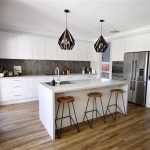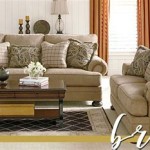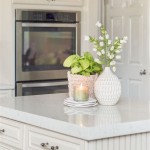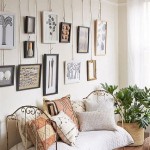Types of Decorative Moulding
Decorative molding, also known as trim, is an architectural element used to enhance the aesthetic appeal of interior and exterior spaces. It adds visual interest, creates a sense of architectural detail, and can be used to highlight specific features of a room or building. The types of decorative molding available are numerous, each serving a unique purpose and contributing to the overall design style.
Crown Moulding: Elevating the Ceiling
Crown molding is a decorative trim that runs along the juncture between the ceiling and the wall. It acts as a transition element, softening the sharp edge and creating a more visually appealing finish. Crown molding comes in a range of styles, from simple flat profiles to elaborate designs with intricate carvings. Its purpose transcends purely aesthetic considerations; it can also help conceal minor imperfections in the wall or ceiling, creating a more polished look.
The key to choosing the right crown molding lies in understanding the overall design style of the space. For instance, a modern home might benefit from a clean-lined, minimalist crown molding profile, while a traditional setting could embrace a more ornate design. Crown molding can be made from various materials, including wood, polyurethane, and plaster, each offering different advantages in terms of durability, cost, and aesthetic appeal.
Baseboard Moulding: Defining the Floor
Baseboard molding, often referred to as skirting board, is a decorative trim that sits along the bottom of the wall, concealing the transition between the wall and the floor. It serves a practical purpose, protecting the wall from scuffs and damage, but also plays a vital role in enhancing the overall aesthetic of a space. Like crown molding, baseboard molding comes in a vast array of styles, offering opportunities for personalization and design expression.
Baseboard molding can be used to create a sense of visual continuity in a room. Matching the style of the baseboard molding to the crown molding can unify the space, drawing the eye upwards and creating a sense of grandeur. Alternatively, contrasting baseboard molding with other architectural elements can add visual interest and create a focal point. Baseboard molding can also be used to highlight specific features within a room, such as a fireplace or built-in shelving.
Casing Moulding: Framing the Windows and Doors
Casing molding frames doors and windows, adding a decorative touch and enhancing the overall visual appeal. It serves as a transition element between the door or window frame and the wall, creating a smooth and elegant finish. Casing molding can be used to create different architectural styles. For a traditional look, consider using elaborate, ornate casings, while a modern design might opt for cleaner lines and simple profiles.
Casing molding is typically made from wood or polyurethane. Wood casing offers a classic look but requires more maintenance, while polyurethane is more durable and resistant to moisture. Casing molding can be painted, stained, or left natural to complement the overall design scheme. Consider using matching casing molding for doors and windows for a cohesive look or choose contrasting styles to add visual interest and create focal points within a room.
Chair Rail Moulding: Protecting Walls from Chairs
Chair rail molding serves a practical purpose, protecting the walls from the wear and tear of furniture, particularly chairs. It is typically installed at a height of approximately 30-36 inches, creating a horizontal line around the room. While primarily functional, chair rail molding can be used to add a decorative touch to a space, adding visual interest and creating a sense of architectural detail. The style of the chair rail molding can be chosen to complement the other molding in the room or to create a distinct visual element.
Chair rail molding can be used to divide wall space, creating a sense of visual separation and enhancing the overall design scheme. For instance, it can be used to separate wainscoting from the upper portion of the wall. Chair rail molding is often paired with wainscoting, a decorative paneling that adds visual interest and texture to a space. Wainscoting can be constructed from wood, plaster, or other materials and can be painted, stained, or left natural.
Other Types of Decorative Moulding
Beyond the commonly used types of molding, there exists a world of decorative trim options, each offering unique aesthetic qualities and functional benefits. These include:
- Picture Rail Moulding: This molding is designed to hang pictures and artwork, offering a discrete and stylish alternative to traditional picture hanging methods. It can be installed at a height that complements the overall design scheme and can be used to create a gallery wall effect.
- Coving Moulding: This molding is used to create a smooth transition between the ceiling and the wall, offering a decorative alternative to crown molding. It is particularly well-suited for modern or contemporary spaces and can be used to create a sense of visual continuity throughout a room.
- Beadboard Moulding: This molding is characterized by a series of raised vertical ridges, creating a textured effect. It is often used in bathrooms and kitchens to create a classic, cottage-like feel. It is also well-suited for use in traditional homes and offers a subtle yet elegant way to add visual interest to a space.
- Cornice Moulding: This molding is used to create a decorative cornice, a horizontal architectural element that sits at the top of a wall. It is often paired with crown molding to create a more elaborate and ornate effect. Cornice molding can be used to enhance the visual appeal of a space and draw the eye upwards, creating a sense of grandeur.
Decorative molding is a versatile element that can be used to enhance the aesthetic appeal of a space, add visual interest, and highlight specific features. It offers a wide range of options, allowing homeowners and designers to create a personalized look that reflects their individual style and preferences. Whether choosing crown molding to elevate the ceiling, baseboard molding to define the floor, or casing molding to frame windows and doors, decorative molding can significantly impact the overall look and feel of a space. By carefully considering the different styles and materials available, homeowners and designers can create a truly unique and beautiful environment.

Diy Guide To Decorative Mouldings

Understanding Classic Moldings Part 2 Oldhouseguy Blog

First Class Building S Crown Moulding Decorative Flexible Polyurethane

Ultimate Guide To The Types Of Mouldings Van Dyke S Rers

Ultimate Guide To The Types Of Mouldings Van Dyke S Rers

Timber Cover Moulds Decorative Mouldings Illingworth Ingham

Interior Decorative Mouldings Maritime Door Window

Ultimate Guide To The Types Of Mouldings Van Dyke S Rers

Custom Crown Moulding Options Design Your Own

Diy Guide To Decorative Mouldings
Related Posts







